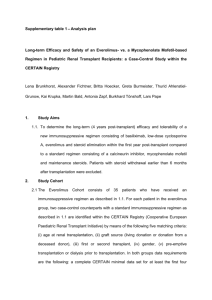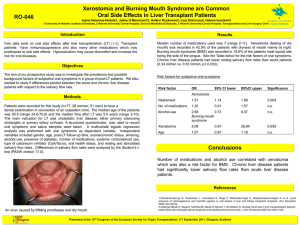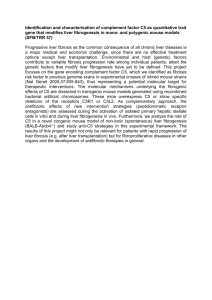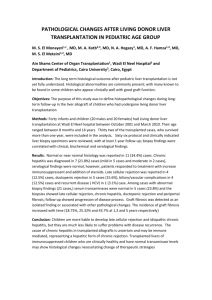legends - BioMed Central
advertisement
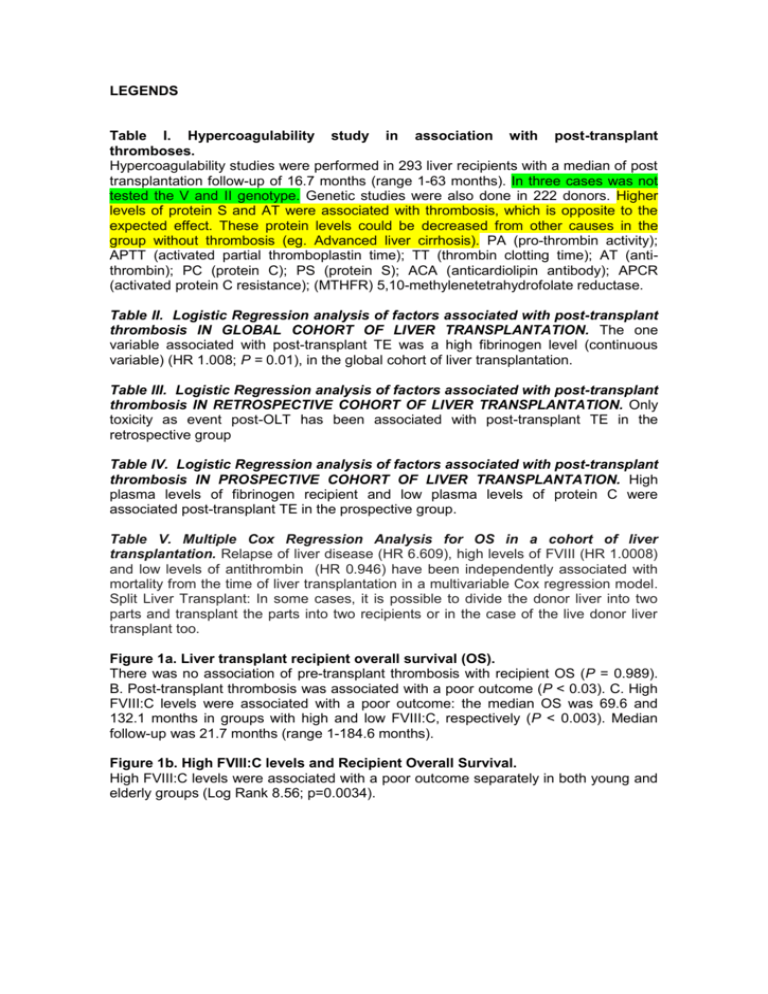
LEGENDS Table I. Hypercoagulability study in association with post-transplant thromboses. Hypercoagulability studies were performed in 293 liver recipients with a median of post transplantation follow-up of 16.7 months (range 1-63 months). In three cases was not tested the V and II genotype. Genetic studies were also done in 222 donors. Higher levels of protein S and AT were associated with thrombosis, which is opposite to the expected effect. These protein levels could be decreased from other causes in the group without thrombosis (eg. Advanced liver cirrhosis). PA (pro-thrombin activity); APTT (activated partial thromboplastin time); TT (thrombin clotting time); AT (antithrombin); PC (protein C); PS (protein S); ACA (anticardiolipin antibody); APCR (activated protein C resistance); (MTHFR) 5,10-methylenetetrahydrofolate reductase. Table II. Logistic Regression analysis of factors associated with post-transplant thrombosis IN GLOBAL COHORT OF LIVER TRANSPLANTATION. The one variable associated with post-transplant TE was a high fibrinogen level (continuous variable) (HR 1.008; P = 0.01), in the global cohort of liver transplantation. Table III. Logistic Regression analysis of factors associated with post-transplant thrombosis IN RETROSPECTIVE COHORT OF LIVER TRANSPLANTATION. Only toxicity as event post-OLT has been associated with post-transplant TE in the retrospective group Table IV. Logistic Regression analysis of factors associated with post-transplant thrombosis IN PROSPECTIVE COHORT OF LIVER TRANSPLANTATION. High plasma levels of fibrinogen recipient and low plasma levels of protein C were associated post-transplant TE in the prospective group. Table V. Multiple Cox Regression Analysis for OS in a cohort of liver transplantation. Relapse of liver disease (HR 6.609), high levels of FVIII (HR 1.0008) and low levels of antithrombin (HR 0.946) have been independently associated with mortality from the time of liver transplantation in a multivariable Cox regression model. Split Liver Transplant: In some cases, it is possible to divide the donor liver into two parts and transplant the parts into two recipients or in the case of the live donor liver transplant too. Figure 1a. Liver transplant recipient overall survival (OS). There was no association of pre-transplant thrombosis with recipient OS (P = 0.989). B. Post-transplant thrombosis was associated with a poor outcome (P < 0.03). C. High FVIII:C levels were associated with a poor outcome: the median OS was 69.6 and 132.1 months in groups with high and low FVIII:C, respectively (P < 0.003). Median follow-up was 21.7 months (range 1-184.6 months). Figure 1b. High FVIII:C levels and Recipient Overall Survival. High FVIII:C levels were associated with a poor outcome separately in both young and elderly groups (Log Rank 8.56; p=0.0034).

